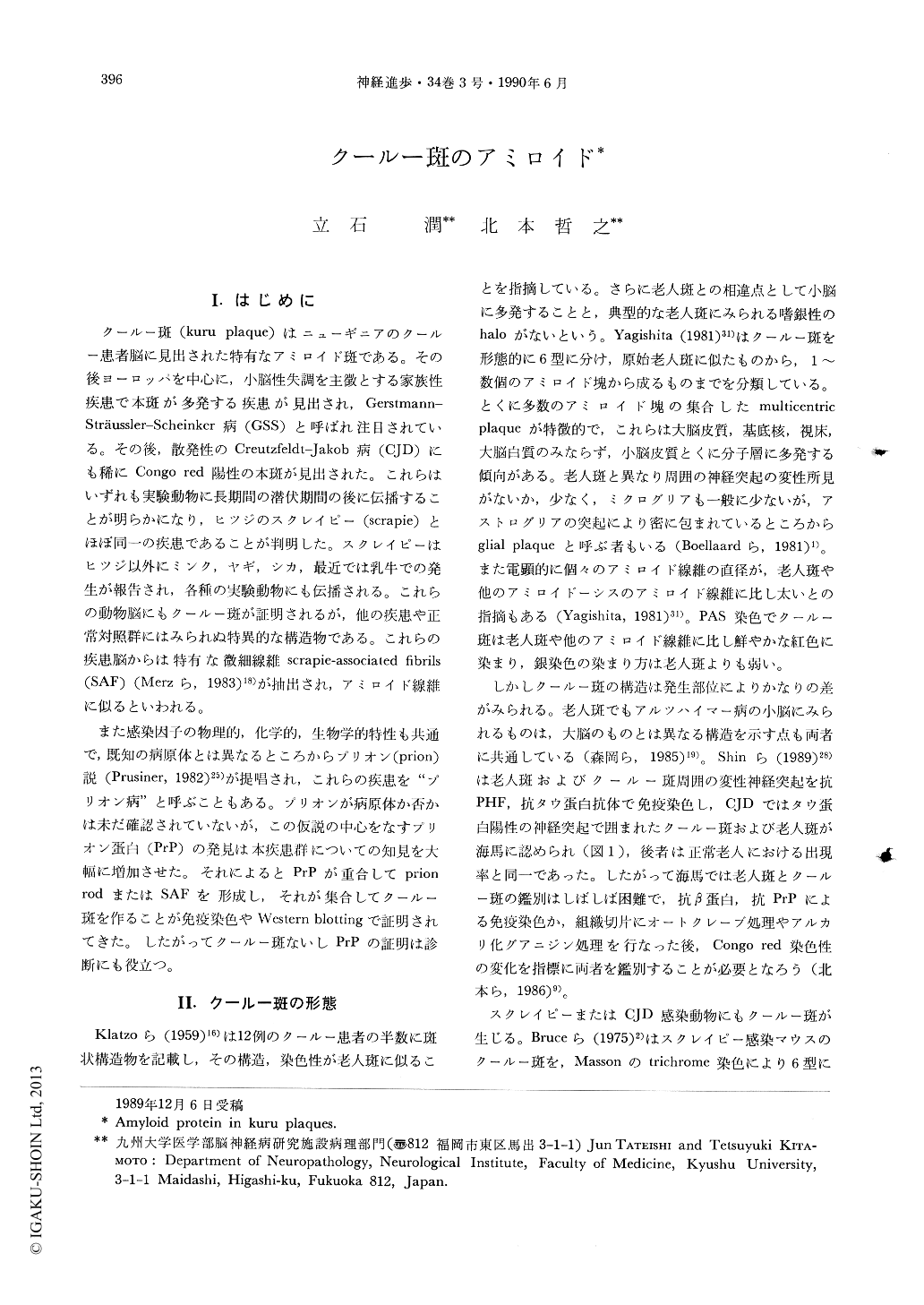Japanese
English
- 有料閲覧
- Abstract 文献概要
- 1ページ目 Look Inside
I.はじめに
クールー斑(kuru plaque)はニューギニアのクールー患者脳に見出された特有なアミロイド斑である。その後ヨーロッパを中心に,小脳性失調を主徴とする家族性疾患で本斑が多発する疾患が見出され,Gerstmann-Straussler-Scheinker病(GSS)と呼ばれ注目されている。その後,散発性のCreutzfeldt-Jakob病(CJD)にも稀にCongo red陽性の本斑が見出された。これらはいずれも実験動物に長期間の潜伏期間の後に伝播することが明らかになり,ヒツジのスクレイピー(scrapie)とほぼ同一の疾患であることが判明した。スクレイピーはヒツジ以外にミンク,ヤギ,シカ,最近では乳牛での発生が報告され,各種の実験動物にも伝播される。これらの動物脳にもクールー斑が証明されるが,他の疾患や正常対照群にはみられぬ特異的な構造物である。これらの疾患脳からは特有な微細線維scrapie-associated fibrils(SAF)(Merzら,1983)18)が抽出され,アミロイド線維に似るといわれる。
また感染因子の物理的,化学的,生物学的特性も共通で,既知の病原体とは異なるところからプリオン(prion)説(Prusiner,1982)25)が提唱され,これらの疾患を“プリオン病”と呼ぶこともある。
Kuru plaque is a pathological hallmark of “prion diseases”, such as Creutzfeldt-Jakob disease (CJD), Gerstmann-Straussler syndrome (GSS), Kuru in New Guinea, and scrapie in various species of animals. The plaque resembles morphologically the senile plaque in Alzheimer's disease, but shows more numerous distribution in the cerebellar cortex and has less argyrophilic crowns than the senile plaque. However, both plaques are accompanied with tau-positive, degenerative neuronal processes, especially in the hippocampus. Immunostains using anti-prion protein (PrP) and anti-β (or A4) protein can identify each plaque.

Copyright © 1990, Igaku-Shoin Ltd. All rights reserved.


